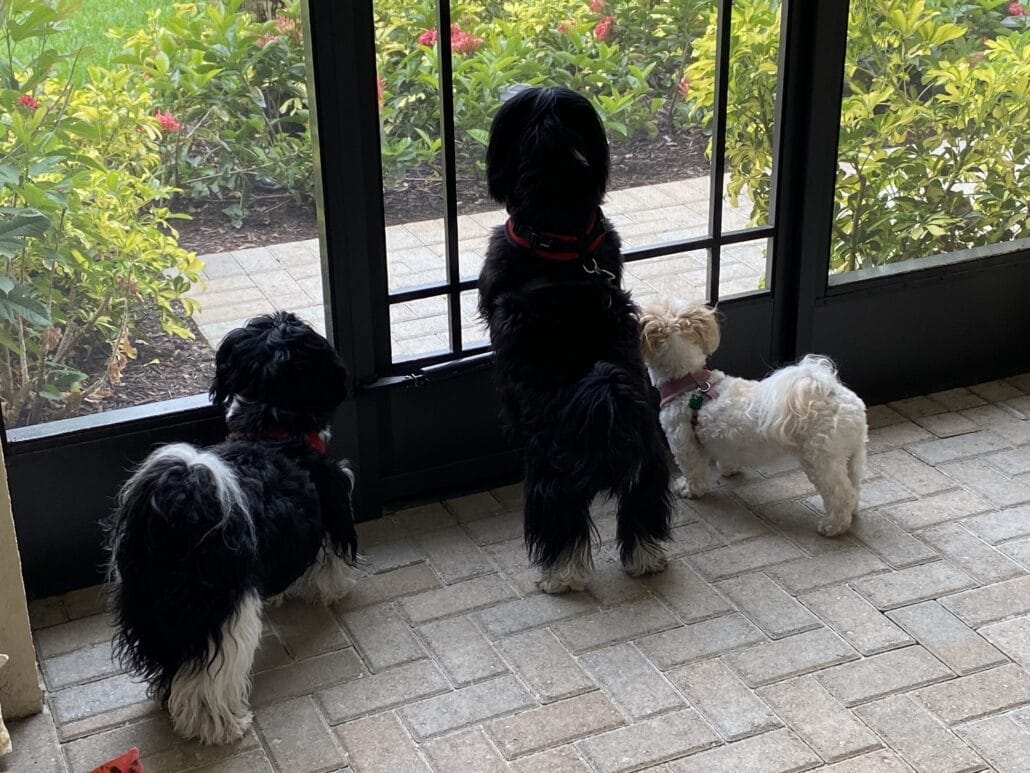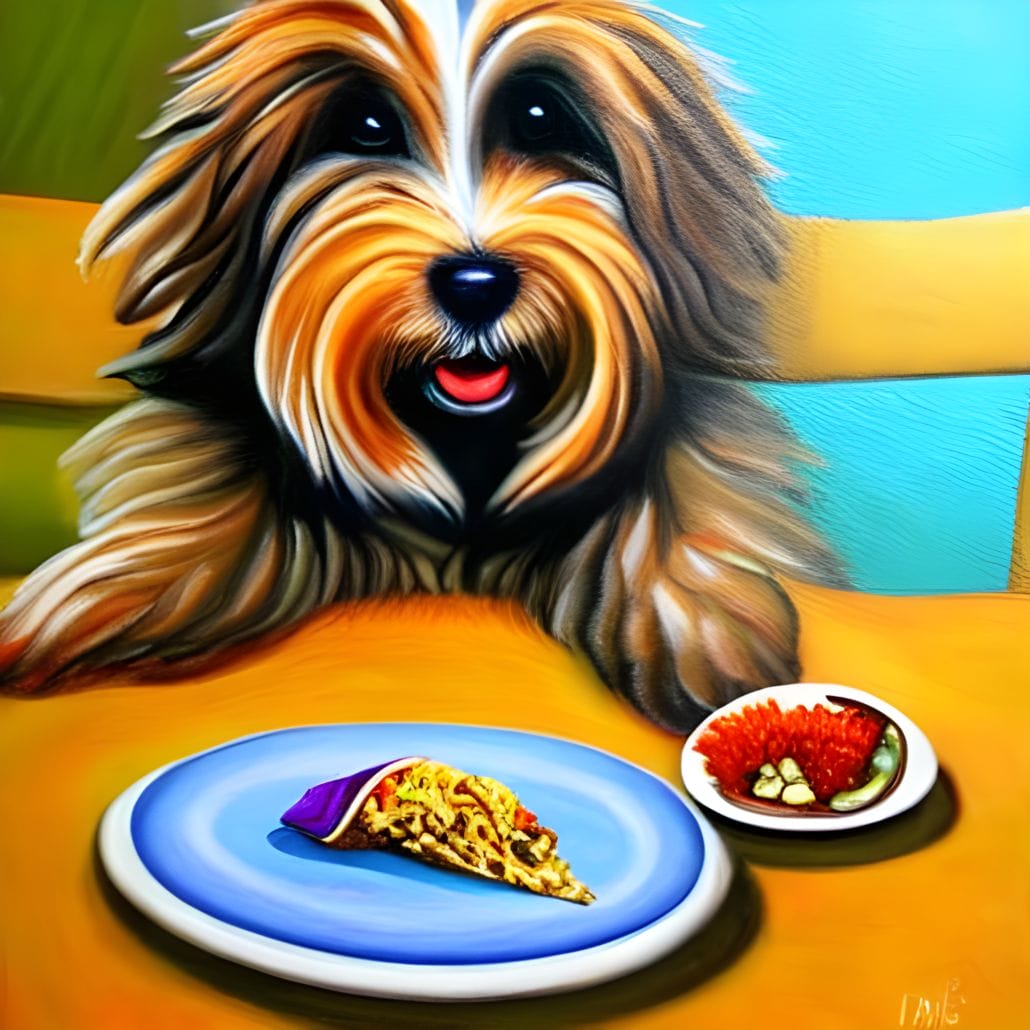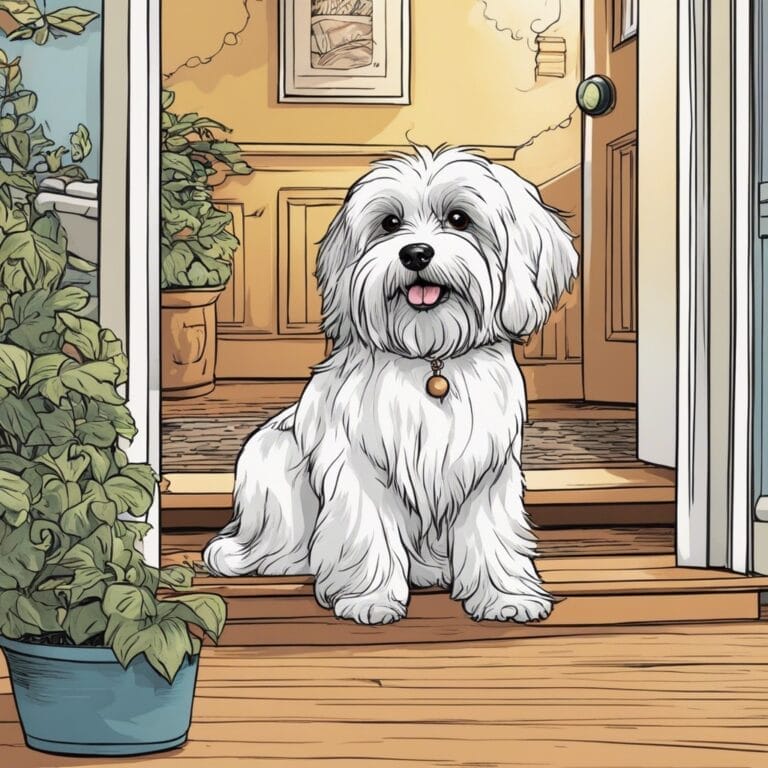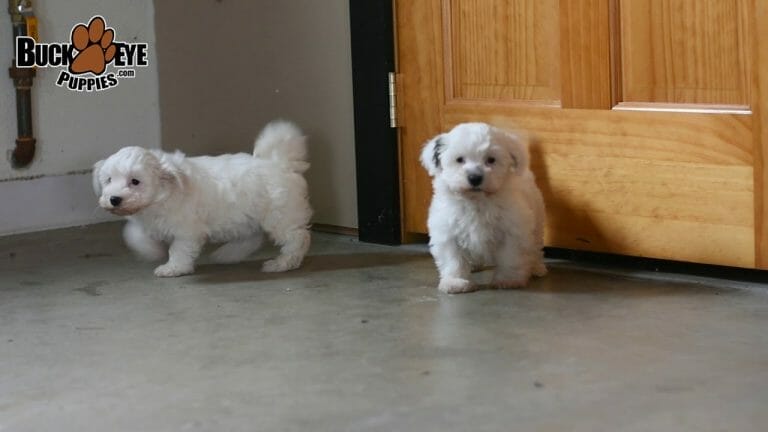
Have you been struggling to properly train your Havanese dog? Are you feeling confused and frustrated about how best to handle common behavior and training problems? Well, don’t worry – you’re not alone!
In this post we will attempt to systematically solve all of your Havanese training problems step-by-step.
By reading through this guide, you’ll learn how to deal with temperament problems, interact with people, housetrain your dog, introduce the crate, and more. With a little patience and effort, training your Havanese dog will become a lot easier than you ever thought possible!
Dealing with Temperament Problems
Dogs come in all shapes and sizes, but there are some personality types that are just a bit more difficult to handle. If you’re looking to acquire a Havanese dog, be sure to do your research first. This includes understanding their temperament and how training will help to reduce aggressive behavior. There are many different training methods that work well with Havanese dogs – clicker training is one of them. Be consistent in your approach and positive reinforcement will help speed up the process. Some common temperament problems include jumping, barking, and chewing. If you’re struggling to solve a problem behavior, don’t hesitate to consult a professional. Havaneses make great family pets, but they do require some special care and training in order to live peacefully alongside others.
Clicker training is a popular animal training method that uses a positive reinforcement to shape desired behaviors. The key to clicker training is timing the clicks with the desired behavior so that the animal associates the click sound with being rewarded. When done correctly, clicker training is a very effective way to train animals of all types, from dogs and cats to horses and dolphins.
How should I interact with my Havanese when it’s acting out?
If your dog engages in an improper behavior, try making a loud noise such as clapping your hands or saying “no”. Reprimands must occur while the behavior occurs, preferably just before it begins, and never afterward.
How do you bond with a Havanese?

There is no one simple answer to this question, as each dog will react differently to various forms of human-animal interaction. However, some general tips that may help include establishing a routine and following it religiously, being patient and consistent with your interactions, and making sure that all potential negative behaviors are avoided. It’s also important to be aware of your surroundings at all times in case the Havanese feels unsafe or threatened. Finally, make sure you understand the breed’s personality so that you can better cater your behavior towards it.
What are the main causes of Havanese behavior problems?
There are a few main causes of Havanese behavior problems, but the most common ones include:
1. Lack of socialization and training before bringing home
2. Separation anxiety or extreme shyness when left alone
3. incompatible dog/human family dynamics that can cause conflict or tense interactions between dogs and people.
How to Train a Havanese to Not Bark
Unfortunately, many people think that a barky dog is simply a cute dog. This incorrect belief can lead to countless problems, including separation anxiety in the havanese and other pets.
To train your havanese not to bark, take some time for yourself to understand how their bark works and why it’s important.
Barks are communication signals between dogs and their owners or pack members. When a warning signal is sounded by a barking dog, it indicates danger or something that the canine deems important enough to bring attention to.
For this reason, training your havanese not to bark can be a difficult task.
Some of the most common reasons why dogs bark are because they’re afraid, anxious or isolated. When these emotional states are chronic and untreated, their behavior will often continue with barking as a way of communicating these feelings. Barking may also occur when dogs feel frustrated or restlessness.
If you want to train your havanese not to bark, it’s important first to understand what triggers their behavior and how you can address those issues by providing positive reinforcement instead of negative punishment. Here are some simple solutions:
Ignore the Barking
Is there a secret craving that Havanese barkers desire? It’s your attention! Whether they are barking for a reaction from you or to get you to throw the ball, barking is an attempt to get your attention.
By teaching your dog that barking doesn’t work, you can help him understand that it’s not effective. You can train your dog to stop barking for attention by doing the opposite of what he wants:
Assume the following: Walk away, drop the ball or put down the leash.
2. Wait for a moment of quiet, or a calm.
3. Pay attention to your dog while you sit.
When you are consistent with your dog, he will bark less because he will understand that quiet works and barking does not.
Why is My Havanese Jumping on Me or Nipping at Me?

There are a few reasons why your havanese may be jumping on you or nipping at you.
First, they may be showing dominance over you by demonstrating their strength and dominance. This can sometimes occur when one dog is significantly larger than the other, when there is an established hierarchy in the family unit, or if your Havanese perceives that he/she is not getting good attention from you.
In order to prevent aggression developing between owners and dogs it is important to ensure that each dog has equal status within the family unit and receives adequate attention and exercise.
What is house training?
House training a dog is teaching them to go potty in designated areas or on specific commands.
House training your havanese dog is a big step in their well-being, so it’s important to start off on the right foot. To make things easier for you and your furry friend, start by training your dog when they’re young and introduce them gradually to the new environment. It’s beneficial to establish a routine from the beginning that your dog will follow faithfully. Use positive reinforcement (rewarding) when your dog performs specific commands such as sit, stay, and come. Be patient – house training takes time and consistency for both you and your furry friend!
How long does it take to housetrain a havanese dog?
The average time to housetrain a havanese dog is around eight weeks. Make sure you continue obedience training and socialization during that time to ensure the pup remains well-behaved in new surroundings.
What are some common Havanese behavior problems?

Some common Havanese behavior include lack of obedience, separation anxiety, barking, chewing things they shouldn’t chew on or destroying property and begging for food at the table.
Clicker training can be a great way to help improve obedience and positive reinforcement can be effective in training dogs not to bark or destroy furniture.
Introducing the Crate
Training your dog can be a lot of work, but it’s worth it when they’re obedient and well-behaved. One of the most effective ways to train them is to introduce them to a crate – a place where they can be confined for their safety and comfort. Selecting the right size crate is essential, and it’s important to use it consistently. Start by placing your dog in their crate during puppyhood so that it becomes an ingrained behavior. As they get older, gradually increase the time they are confined. When you return home, release your dog from their crate and give them a treat. Now that you know how to train your Havanese dog, enjoy peace of mind knowing that they’re safe and well-behaved.
What are some of the benefits of using a crate?
Having a crate can help to train your dog and behavior problems. Crates can be used as a way to keep your dog contained when you are not able to supervise them, or when there is an emergency situation. Additionally, using crates can help teach obedience behaviors such as staying in one spot or sit/down.
What should be done if your dog doesn’t like/ seem to dislike the crate?
One possible solution to this is to try shaping the dog’s behavior by providing positive reinforcement when he or she behaves properly in the crate. This could involve feeding or playingtime inside of the crate once it has been taught as a positive place for relaxation and playtime. If your dog continues to act out, there may be another issue that needs attention such as anxiety or Trainer-Dog aggression. In these cases, professional help may be necessary in order to properly address the underlying cause of the problem and resolve it permanently.
If my dog is sick, can he or she still be confined
Generally, dogs are able to be confined while they are sick, but there may be some restrictions. For example, if your dog has a fever or is experiencing diarrhea or vomiting, he may not be able to tolerate confinement very well and could become agitated. If possible, try to keep him nearby so you can monitor his condition and make decisions about whether confinement is necessary.
Using Positive Reinforcement

Having a Havanese dog can be a lot of fun – as long as you’re prepared to train them properly. Start training your dog from the beginning by using positive reinforcement. The key to success is consistency – be patient and keep training sessions short. Use treats as a form of positive reinforcement, and always praise your dog when he or she succeeds in completing a task. A well-trained havanese can make for an enjoyable pet – start training today!
Offer affection as a reward
It can be tough training your dog, but it’s essential for their overall health and well-being. To get started, start by rewarding him with affection. This can be in the form of praise, treats, or pet toys. If things get tough, use reasonable punishment – a stern look and verbal commands – to get your dog’s attention. Be patient – it will take time for your Havanese to learn what’s expected of him. With a little bit of effort and consistency, you’ll be on your way to training a well-behaved Havanese dog!
All or None Reward Training
Training your Havanese dog can be a lot of fun, if you’re prepared for the challenge. Start by training basic commands like sit, stay, and come. Once the dog is following these commands correctly, it’s time to start adding more complex behaviors. Try training the dog to walk on a leash, or to greet people politely. As with all training, be consistent – if you stop practicing the behavior at home, the dog will likely revert back to his old ways! In the end, it’s all about rewarding your Havanese dog for good behavior, and avoiding punishment for bad behavior. Let these tips help you get started training your Havanese dog the right way!
How to Minimize Separation Anxiety
No dog owner wants to deal with separation anxiety, but it’s a common problem for havanese dogs. If left unchecked, this anxiety can lead to destructive behaviors like chewing, barking, and pacing. The good news is that training your havanese dog can help minimize separation anxiety and improve his overall temperament. One of the best ways to do this is by training your dog early. Start by gradually increasing the time he is left alone until he’s able to handle extended periods without crying or reacting nervously. Use positive reinforcement when training your havanese, so that he knows it’s okay to behave calmly during separation times. Armed with this knowledge, you’ll be able to enjoy your pup without worrying about any destructive behavior.
Dealing with Digging Behavior inside and out
Havanese dogs are known for their digging behaviors, but there are ways to train them not to dig so much. If you notice your dog starting to dig or chew on things outside the house, intervene immediately and provide training tools such as clickers. Be consistent with your training so that the dog knows what’s expected of them both inside and out! If they start digging outside, place a baby gate across the door leading out and use a treat as an incentive for them to stop digging. Reward positive behavior with treats and toys – this will help keep your dog entertained and less likely to dig in other areas of the home!
How to Prevent Your Dog From Begging for Food at the Table?

One common problem dog owners experience is their dog begging for food at the dinner table. This can be a nuisance to both you and your dog, as it leads to disrupted dinners and plenty of begging. The good news is there are ways to stop your dog from begming for food at the table without resorting to harsh punishment or training methods that might not be effective in the long run.
There are several things you can do if your dog begs incessantly for food at the dinner table:
1) Demonstrate patience when feeding your pet – If you’re quick to give
your dog their kibble, they may not associate waiting their turn at the dinner table with good things. Rather than rewarding them for begging (which will only make the behavior worse), try taking a few minutes to give your pet some nutritious treats while they patiently wait their turn. This will help them learn that patience is a valuable skill and makes dinnertime more enjoyable for all!
2) Create an obedience training routine – One of the best ways to discourage begging behaviour is to create a pleasing obedience training routine that your dog understands and follows.
3) Feed the dog first before your family sits down to dinner.
Dealing with Jumping Up Behavior
Dogs are man’s best friend, and havanese puppies are no exception. They are playful, cuddly and very active, making them prone to jumping up on people and other animals. This behavior can be frustrating and even dangerous, so it’s important to train your havanese puppy correctly from the start. Start by rewarding good behavior instead of punishing bad behavior. This will help your pup learn that good behavior gets rewarded, and bad behavior gets punished. Be consistent in your training efforts, and eventually your dog will learn what is expected! If behavior problems persist despite following these steps, seek professional help. In the meantime, using an enclosed crate for short periods of time can help to prevent jumping up on people.
Dealing with Hyperactivity in you Havanese
Dealing with Hyperactivity in a havanese dog can be difficult, but with a little bit of patience and effort, you can manage the situation. Here are a few tips to help you get started:
Hyperactivity is a common problem in havanese puppies. However, most Havanese will start to mature around 8-10 months and have an adult temperament by 2-3 years of age.
Make sure your havanese puppy is getting enough exercise and playtime. A lot of hyperactivity can be resolved by providing plenty of outlets for energy, like a large yard to run in or a dog puzzle to solve.
Why do havanese often pull on the leash?
One common havanese behavior problem is pulling on the leash. This can be caused by a number of reasons, including anxiety, boredom, or insecurity. Solutions for tackling this behavior range from simple obedience training methods to more complex dog psychology interventions.
How can you prevent your havanese from pulling on the leash?
Some ways to prevent your havanese from pulling on the leash are to keep a tight grip on their collar, train them early and often, use positive reinforcement, and limit exercise time.
In addition, provide treats when your Havanese walks well on the leash, and make it a regular habit to walk with them. Start by gradually increasing the amount of time you are out walking each day, and be patient with the process; it can take up to two months for most dogs to become obedient walkers.
What is the best way to obedience train a havanese?
There is no one-size-fits-all answer to this question, as each Havanese may respond differently to different training methods. However, some general tips that may be helpful include: rewarding your dog when they obey commands (with treats or positive reinforcement), providing plenty of positive reinforcement when he displays good behavior, and establishing clear rules and boundaries with your dog in a way that he understands.
If you find that your Havanese is displaying stubborn or aggressive behaviors, please consult with a veterinarian who can provide more specific advice on how to best train him.
How can you housetrain a havanese puppy?
One way to housetrain a havanese puppy is by Praising and Focusing on Good Behavior. You should also provide plenty of adult dog toys so the pup can play while indoors. If your pup displays destructive behavior, you may need to crate or tether him when he’s not allowed inside.
Come Here Command
Having a dog is one of the coolest things ever, but training them can be a bit of a challenge. If you’re looking to train your havanese dog, here are some essential tips to get you started. When trying to get your dog to come to you from out of the house, start by rewarding good behavior with a treat or toy. Be sure to shout loudly and clear your voice, so your dog knows where you are. Once your dog is close enough, gently call him back with ‘come here’ command. Always be sure to reward good behavior, and be patient – training your dog will take time and patience. Have friends take turns to hold their collars and then allow their handlers to walk a distance away and then call them. Practice makes perfect!
What can I do if my Havanese isn’t Responding to Commands?
There are a few things that can be done in order to get a Havanese dog to respond when commanded. One way is to use positive reinforcement, such as giving the dog treats or petting them once they have responded to Commands. Another way is using punishment, such as sending them away from you if they do not respond after being asked several times. Using both methods together can help ensure that your Havanese will always obey your commands!
How can you get your dog to come to you from out of the house?
This is a question with many possible answers, depending on the reason your dog is refusing to come when called from inside.
If your dog is avoiding you out of fear or dislike, some common solutions include training sessions in which treats are given only after your dog has willingly come to you; using food as a reward instead of verbal commands; and/or establishing rules about going outside that are consistently enforced through positive reinforcement.
If your dog isn’t responding to basic obedience commands (e.g., “come”), it may be necessary to consult a trainer.
What are some basic obedience commands that you can start training your Havanese with?
One basic obedience command that you can start training your Havanese with is “Sit”. Other commands that may be useful for training your Havanese include “Down”, “Stay”, and “Come”.
How long will it take for your Havanese to learn new cues at a distance?
The average dog takes about 10 weeks to learn new cues at a distance. However, some dogs may take longer or shorter times depending on their individual temperament and intelligence.
What tasks can be trained at a distance with your dog?
One way to train your dog remotely is to use a clicker training method. With this type of training, you provide positive reinforcement (a “click” sound) for each action your dog takes in response to specific commands such as sit, stay, come, and down. This can be helpful if you need to leave the house but still want your dog trained; simply give him his obedience command followed by the appropriate clicker cue and he’ll know what you want him to do. You can also use verbal cues combined with a positive reinforcement signal (such as petting or clicking) in
How should you reward your Havanese when they complete the task successfully?
There is no one answer to this question as the rewards that work for one dog may not work for another. However, some common rewards that can be used with Havanese include petting, praise, treats, and playtime. It is important to match the reward to the behavior you are hoping to encourage – rewarding good behavior with positive reinforcement will tend to lead to continued good behavior while punishing bad behavior can lead to a dog developing negative associations with behaviors they should act positively towards.
Down – When your dog is down, give him a treat and then pet/cuddle him.
Conclusion
Having a well-behaved dog is a priceless commodity. Training your dog diligently will ensure that they remain well-mannered and pleasant in your home. Make sure to be patient and consistent with your commands, and you’ll be on your way to having the perfect house pet – your Havanese!
- About the Author
- Latest Posts

Sara is a passionate writer and an avid lover of Havanese dogs. With several years of experience in dog training, breeding, and care, she has developed a deep understanding and admiration for the Havanese breed. Sara’s mission is to provide valuable insights, resources, and tips to help Havanese dog owners provide the best possible care and nurturing for their beloved pets.







